Acknowledgments
Regardless of how preoccupied and intense I got as I researched, wrote, and took photographs for this book, my indispensable friend Linda Hickson kept me anchored with her zest for life and willingness to trek through cemeteries; talk about corpses, coffins, and crypts; and read every draft of the manuscript. At different times during the process, other friends and family members pitched in, too, including Stephen Colman, David Colman, Jonathan Colman, Katrin de Han, Dana Bilsky, Jeremy Bilsky, John Granberry, Elizabeth Skurnick, Gay Culverhouse, Linda Owen, and Hedy Leutner. To all of them, I give my undying gratitude.
I am also grateful to Christy Ottaviano, the perfect editor, for her intelligence, farsightedness, and unwavering commitment to this book. Also thanks to Meredith Baldwin, who designed this book and created a stunning and sensitive cover and layout. In addition, I want to give a special thank-you to the many people who shared their personal experiences with me, including Midge Albert, Peter Amicucci, Camilla Boyer, Charisse Broome, Clyde Chamberlin, Aikaterini Chatzistyli, Ojoma Edeh, Rodger Fink, Peg Holbrook, Barbara Horl, Marlise Johnson, Ishita Khemka, Barbara Kiefer, Lindsay Koehler, Pauline Manhertz, Mary Marcopul, Doug Marion, Joyce Miano, Alison Noble, Judy Reishtein, Ann Sparanese, Frances Treanor, Sandie Walters, Salifu Yamusah, and Aisha Zikria.
While doing my research, I received assistance from many informative people, including Roberta Halporn, executive director, The Center for Thanatology Research and Education, Brooklyn, New York; Murray Marks, co-director, Anthropology Research Center, University of Tennessee, Knoxville, Tennessee; Joan Huffman, trauma/surgical critical care physician, Lehigh Valley Hospital, Allentown, Pennsylvania; Bill Siegmann, curator for the arts of Africa and the Pacific Islands, Brooklyn Museum of Art, Brooklyn, New York; Donna Jones, editor, MBNews , Monument Builders of North America, Des Plaines, Illinois; Thomas Luke Conroy, superintendent, Oak Hill Cemetery, Nyack, New York; Leo and Debra Bodanski, superintendent and office manager, Brookside Cemetery, Englewood, New Jersey; Lisa Carlson, executive director, Funeral and Memorial Societies of America; George W. Clarke, National Selected Morticians, Northbrook, Illinois; George Lemke, executive director, Casket and Funeral Supply Association of America; Jack Springer, executive director, Cremation Association of North America; Nick Verrasto, American Cemetery Magazine , Iselin, New Jersey; Jennifer Songster, curator for audiovisuals, Ohio Historical Society, Columbus, Ohio; Miriam Bobkoff, reference librarian, Santa Fe Public Library, Santa Fe, New Mexico; Maja Keech, reference specialist, Prints and Photograph Division, Library of Congress, Washington, D.C.; and Pat Zimmermann, a teacher at the Smith School, Ramsey, New Jersey, and her sixth-grade class of 1996, who sent me their questions about corpses, coffins, and crypts.
Several people whom I have already thanked also carefully read all or part of my manuscript and offered helpful comments, including Roberta Halporn, Joan Huffman, and Thomas Conroy. In addition, I want to thank Dot Emer, a longtime childrens librarian who now lives in Boca Raton, Florida, and Margaret Crocco, assistant professor of social studies and education, Teachers College, Columbia University, for their scrutiny and feedback.

Contents

Dead Is Dead:
Defining Death
Death Is Destiny:
Understanding Death
What Happens to Corpses:
Decomposition, Transplants, Autopsies, and Embalming
Bones and Ashes:
Cremation and Other Ways to Dispose of Corpses
How to Contain the Remains:
Urns, Coffins, Crypts, and Mausoleums
Where Corpses End Up:
Cemeteries and Other Burial Sites
Rituals for People Who Have Died:
Burial Customs, Ceremonies, and Celebrations
Death Is Everywhere:
Images in the Arts and Everyday Life
Where to Find the Remains and
Burial Sites of Some Famous People
Preface
When Christy Ottaviano, an editor at Henry Holt, contacted me about writing this book, I experienced a tangle of emotions as different parts of me had different reactions: the creative part of me was challenged, the intellectual part was curious, and the emotional part was apprehensive. When I started to do some research about dead bodies and embalming, all of me felt queasy.
Surrounding my tangle of emotions was a sadness I still feel about the long-ago deaths of my brother and father. Jon was twenty when he died. I was twenty-one. Three years later my father died, two months after his fiftieth birthday. Now, Im fifty-two and the sadness is mostly subliminal. However, it surfaces under certain circumstances. Christys request turned out to be one of those circumstances, although she had no way of knowing that.
Christy also did not know that I have had a variety of experiences with corpses, coffins, and cemeteries. Once I spent a day in an apartment with my dead great-uncles body. After he was cremated, his wife and I flew to Czechoslovakia (now the Czech Republic) to bury his cremated remains in the family plot in Kory any, remains that were in a box I carried on the airplane and put under my seat. Then there was my experience as a youngster when my fathers friend Dr. Schwartz would come to our house with slices of peoples brains in thick, narrow glass containers. Dr. Schwartz was doing research about the causes of mental illness, and he and my father, who was a psychiatrist, spent hours sitting at the kitchen table scrutinizing the brain slices for abnormalities. I remember being horrified that peoples brains had been taken out of their bodies, although my father reassured me that the people were dead when their brains were removed and that they had agreed to let scientists study their brains after they died.
any, remains that were in a box I carried on the airplane and put under my seat. Then there was my experience as a youngster when my fathers friend Dr. Schwartz would come to our house with slices of peoples brains in thick, narrow glass containers. Dr. Schwartz was doing research about the causes of mental illness, and he and my father, who was a psychiatrist, spent hours sitting at the kitchen table scrutinizing the brain slices for abnormalities. I remember being horrified that peoples brains had been taken out of their bodies, although my father reassured me that the people were dead when their brains were removed and that they had agreed to let scientists study their brains after they died.

Planting flowers on a grave is a common ritual, which is what Im doing around my brothers gravestone in Randolph Center Cemetery in Randolph Center, Vermont. My father is buried beside Jon. A large marker with their last name, Morgan, is nearby .
My mother, on the other hand, was interested in cemeteries. Occasionally I would find myself in a cemetery with her looking for graves. In particular, I remember the sweet spring smells and warm sun of the day that we searched a cemetery until we found the poet Emily Dickinsons grave. It was raining when we went looking for the grave of Justin Morgan, a schoolteacher and owner of the original stallion of the breed of Morgan horses, but that didnt stop uswe just pretended that we were ducks.

It was a cold November day when David Colman, my son; Linda Hickson, a friend; and I went to visit Emily Dickinsons grave in West Cemetery, Amherst, Massachusetts. Although my mother had taken me to the grave when I was a child, I did not remember its exact location, so we split up and went looking. Happily it wasnt too long before I heard David shout, Here she is! Linda is copying down the inscription, which reads: Emily Dickinson, Born Dec. 10, 1830; Called Back May 15, 1886. Previous visitors had left a rose, a stick, and a bundle of twigs on top of Dickinsons gravestone .

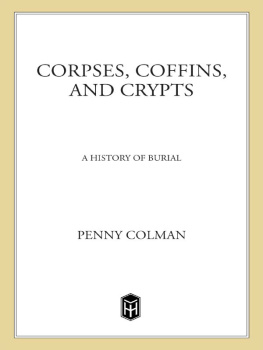

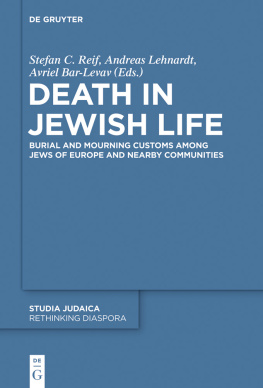
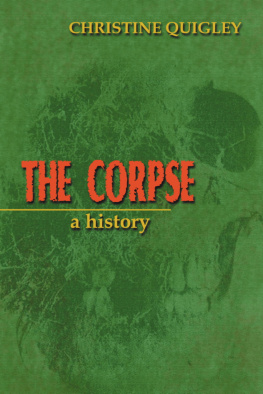
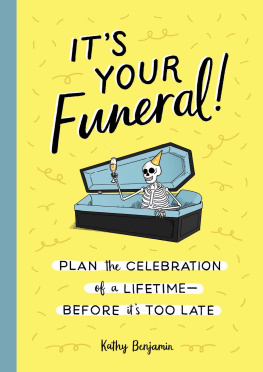

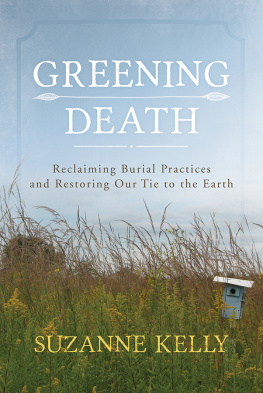
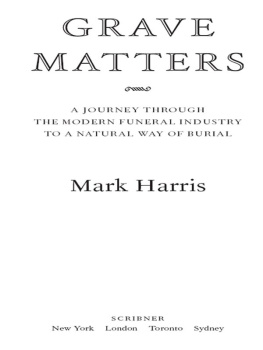
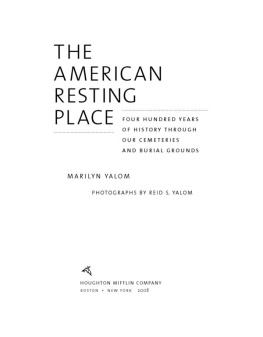
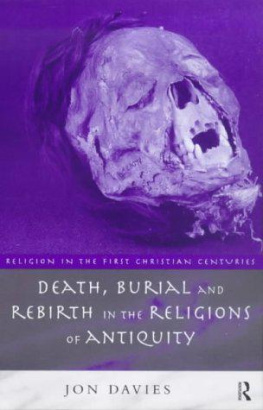


 Contents
Contents  any, remains that were in a box I carried on the airplane and put under my seat. Then there was my experience as a youngster when my fathers friend Dr. Schwartz would come to our house with slices of peoples brains in thick, narrow glass containers. Dr. Schwartz was doing research about the causes of mental illness, and he and my father, who was a psychiatrist, spent hours sitting at the kitchen table scrutinizing the brain slices for abnormalities. I remember being horrified that peoples brains had been taken out of their bodies, although my father reassured me that the people were dead when their brains were removed and that they had agreed to let scientists study their brains after they died.
any, remains that were in a box I carried on the airplane and put under my seat. Then there was my experience as a youngster when my fathers friend Dr. Schwartz would come to our house with slices of peoples brains in thick, narrow glass containers. Dr. Schwartz was doing research about the causes of mental illness, and he and my father, who was a psychiatrist, spent hours sitting at the kitchen table scrutinizing the brain slices for abnormalities. I remember being horrified that peoples brains had been taken out of their bodies, although my father reassured me that the people were dead when their brains were removed and that they had agreed to let scientists study their brains after they died.
